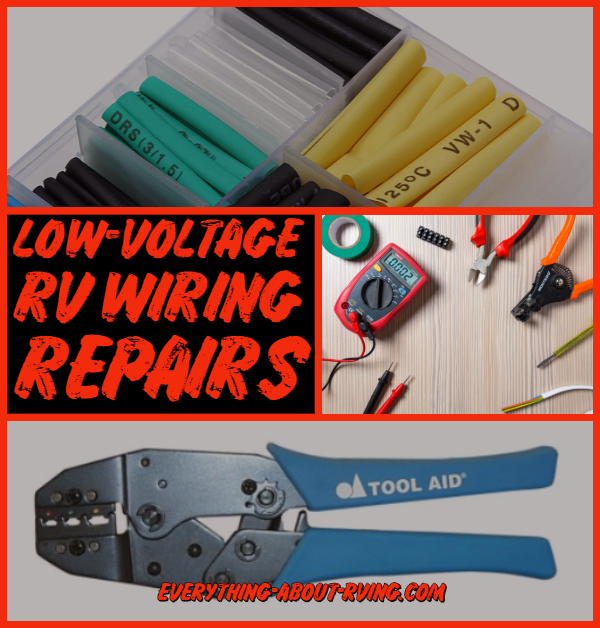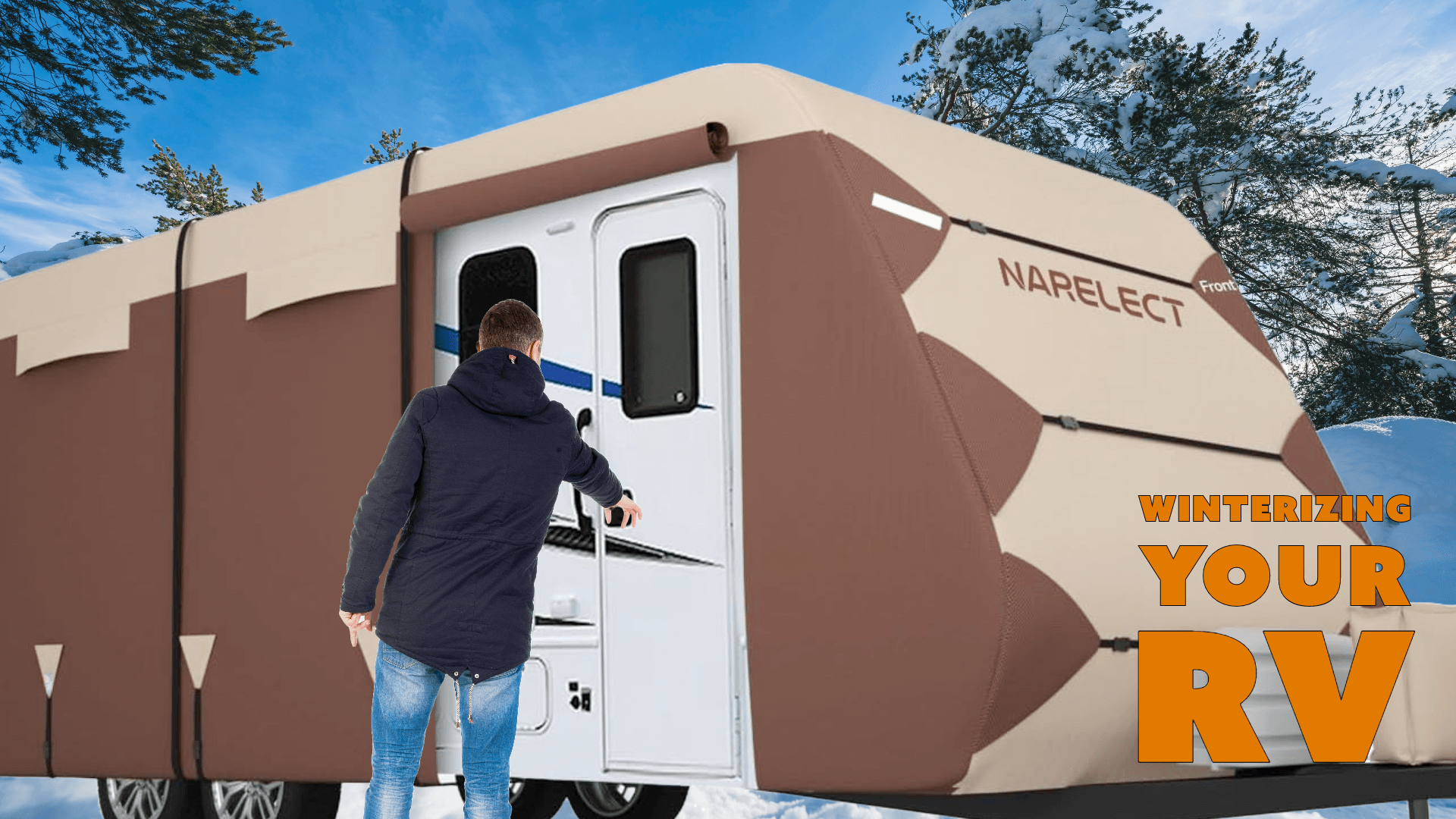Low-Voltage RV Wiring Repairs
Wiring is the backbone of an RV’s electrical system
Presented by FMCA
Low-voltage wiring repairs to your RV can be tackled by RV owners who have some basic knowledge and a few specialized tools. Learn how to perform simple electrical wiring repairs to your RV, thanks to the experts at FMCA.
Overview
Wiring is the backbone of an RV’s electrical system. Wires must be the proper size to handle the rated current flow for each device. If a wire is too small in diameter or makes too long of a run, the powered device will starve for voltage or current, and both the wiring and the device will overheat.
Think of wiring as you would a plumbing system. As the flow rate of water increases, so must the diameter of the water pipe to overcome the restriction of a smaller pipe. As the pipe length increases, a larger diameter may be required to compensate for the loss in pressure as a result of friction within the pipe. Electrical wiring operates on the same principle, so it’s important to use the proper wire gauge for the designated load. A circuit that runs fine on a 16-gauge wire may not be suitable if more devices are added to that wire. A larger wire gauge may be needed to handle the increased loads.
The wire gauge is not dependent on the voltage but on current flow, which is measured in amperes. A 15-amp circuit requires a 14-gauge wire, but if that load increases to 20 amps, a larger diameter, 12-gauge wire is needed. When choosing a wire size for a particular application, it’s important to determine the total current draw for that circuit and compare that with a wire-gauge chart.

Stranded Wire
Stranded Wire, rather than solid wire, is used for low-voltage DC wiring in RVs. A big advantage of stranded wire is its flexibility. It also holds up better when subjected to vibration.
It’s important to understand that the insulation surrounding the conductor is sensitive to voltage. The insulation in low-voltage wiring is rated at a maximum of 50 volts and should never be used for high-voltage applications. Wiring specifically designed for higher voltage should be used exclusively on 120-volt-AC circuits.
Most low-voltage wiring insulation consists of two varieties, GPT and GXL. GPT wiring has a PVC jacket that is good for interior wiring and is rated to 176 degrees Fahrenheit. GXL wiring costs a bit more, because it has a cross-linked polyethylene jacket and is rated for 257 degrees Fahrenheit. GXL is required for use in hotter locations, such as engine compartments, but can be used anywhere.
Wire insulation prevents electricity from jumping out of the conductor to the surrounding environment. Insulation also provides some protection to the conductor. Eventually, though, a wire that is subject to vibration and is in contact with another object can rub through its insulation and may short to another conductor. If the short occurs to ground, the breaker or fuse should trip, but if it shorts to another hot circuit, you may experience any number of electrical anomalies. If the conductor shorts to the chassis or other metal component, the result may be a hot-skin condition, which in a high-voltage instance can be a serious, even fatal, hazard.
To prevent abrasive wear, wiring should be placed inside a protective wiring loom. The most common is corrugated split-nylon loom, which is available in various sizes. Rated at up to 300 degrees Fahrenheit, the loom protects the wire from damage caused by abrasion, chemicals, and heat. The split in the loom allows for easy access when inserting wires. The loom is easy to cut to the desired length with a utility knife. Nylon cable ties should be used to fasten the loom to the RV at suitable points.
Overcurrent Protection

Type I circuit breakers
Wires heat up as current flow increases. If a short circuit develops, the amperage spikes and the wire gets so hot that it burns off its insulation. That can start a fire, which in the worst case could consume an RV. That’s why overcurrent protection is needed for every circuit. Such protection can be in the form of a fuse or a circuit breaker. Fuses are disposable, so once they blow, they must be replaced.
Circuit breakers are more costly, but for critical circuits they can be reset and used again. Type I circuit breakers automatically reset once they cool and are the most common. Type III circuit breakers have a small reset button that must be manually pushed to restore power to the circuit. Remember that the portion of wire between the battery and the fuse or circuit breaker is unprotected, so it’s important to position the circuit breaker as close to the power source as possible to achieve the best possible protection. Circuit breakers must be matched to the wire gauge as well. Adding a larger fuse or breaker to a wire that isn’t designed to carry that much current defeats the purpose of the protection.
Connections
Proper connections must be made to securely attach wiring to the destination equipment or device. Simply wrapping a wire around a screw head invites failure. When a screw connection is needed, a loop-end wiring terminal should be attached to the end of the wire so that it can be securely fastened to the screw. Most auto parts stores carry an assortment of wire terminal ends that contain loop-end terminals. Stores also sell butt-end and flat-blade connectors, which are used to join two wires.
A PVC or nylon insulation collar surrounds the crimp barrel of each connector and is color-coded to identify the size of wire each terminal requires. A red collar signifies a terminal designed for 18-gauge or 20-gauge wire. A blue collar is designed for 14-gauge or 16-gauge wire, while yellow is rated for 10-gauge or 12-gauge wire. Selecting the correct terminal for a particular wire size ensures a tight connection that won’t detach.

S&G Tool Aid 18900
You’ll need to use a crimping tool, but be careful, because some of the inexpensive ones do a poor job and the connection may pull apart. I suggest a crimp tool such as the Paladin Tools PA1308 or the S&G Tool Aid 18900. These tools, which have a die with three barrel sizes, perform a complete roll crimp on the fitting, rather than a single indent, producing crimps that won’t pull apart.
Many connections require running a wire to ground. Loose, damaged, or missing ground connections are some of the most prevalent issues when chasing down an electrical problem. Such ground connections attach to the vehicle’s frame to complete the circuit. Often, the connections are in a location that is subject to corrosion. As a preventive measure, protect the connection with battery terminal sealant. A ground connection should be to clean, bare metal. Remove paint that could hinder the connection, and use a star lock washer to help bite into the frame and make better contact with the terminal ring. If you use a bolt rather than a screw, a nylon lock nut or lock washer will prevent the nut from vibrating loose.
Soldering wires together makes a solid connection. However, battery and inverter cables pass large amounts of current, which can melt the solder. Such high-capacity connections should have crimped connectors. Crimping tools for large connectors are expensive, so your best option may be to find a truck or RV service center that can perform the crimps for you.
Corrosion Protection

Polyolefin shrink tubing
When electrical current passes through two dissimilar metals, galvanic corrosion can occur. When moisture attacks connections, rust can form. Salt water and acidic vapor from nearby batteries hasten these forms of corrosion and inhibit the ability of the connection to pass current.
When making a soldered splice of two wires, it’s important to seal the connection and protect it from corrosion. Polyolefin shrink tubing is ideal; it forms a seal that protects the connection from the elements. Shrink tubing is placed over the wires prior to soldering and then slides over the connection after it has been soldered. Then, a hair dryer or heat gun warms the tubing and shrinks it to seal the wire.
Shrink tubing also can be used to seal the barrel ends of ring-style terminals to prevent corrosion from rotting the wire inside the barrel. This is especially important for battery terminal connections. Large-diameter shrink tubing for these cables is available in both red and black to identify positive and negative cables. When making a connection in a clean environment, such as behind a vehicle’s instrument panel, standard insulated butt connectors or flat-blade connectors generally are adequate.
Top-post batteries can receive further protection against corrosion. For example, to each post, add a felt washer that contains NOCO Company’s NCP2 corrosion preventative compound. NCP2 also is available in spray cans and can be useful for coating ground connections or terminal studs in areas that are exposed to the elements.
By investing a little time learning some electrical basics and having a few small tools, you’ll be able to handle most of your wiring repairs.
About The Author
FMCA RV Club brings RV knowledge to its members. For more tips, visit www.familyrvingmag.com and www.fmca.com.
This information is for educational purposes. FMCA shall not be responsible nor retain liability for RVer’s use of the provided information. Prior to making any RV service decision, you are advised to consult with an RV professional.
Do you have any suggestions or comments on this topic? You can add them to this page by using the comments section located below.



